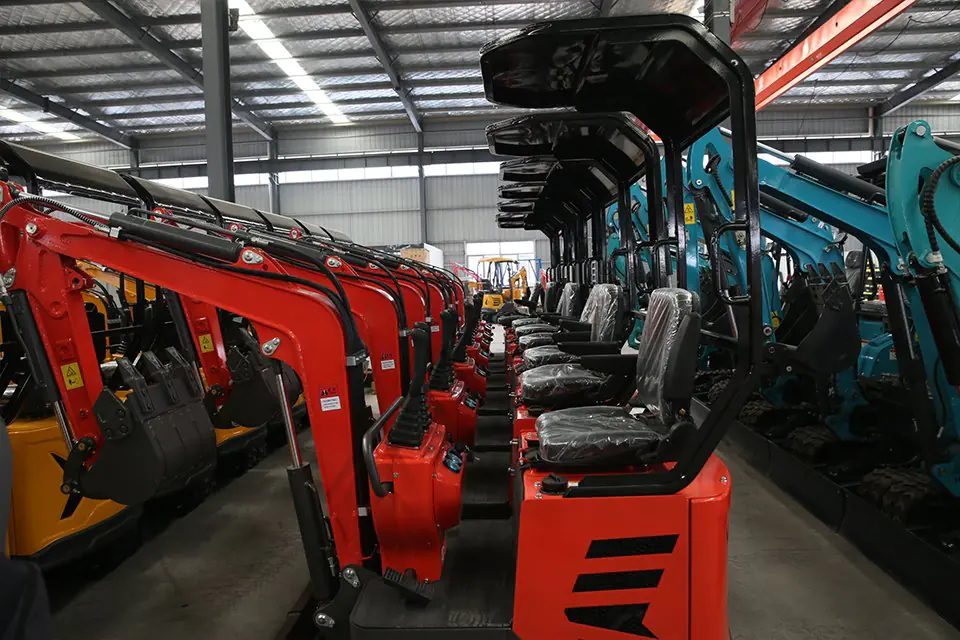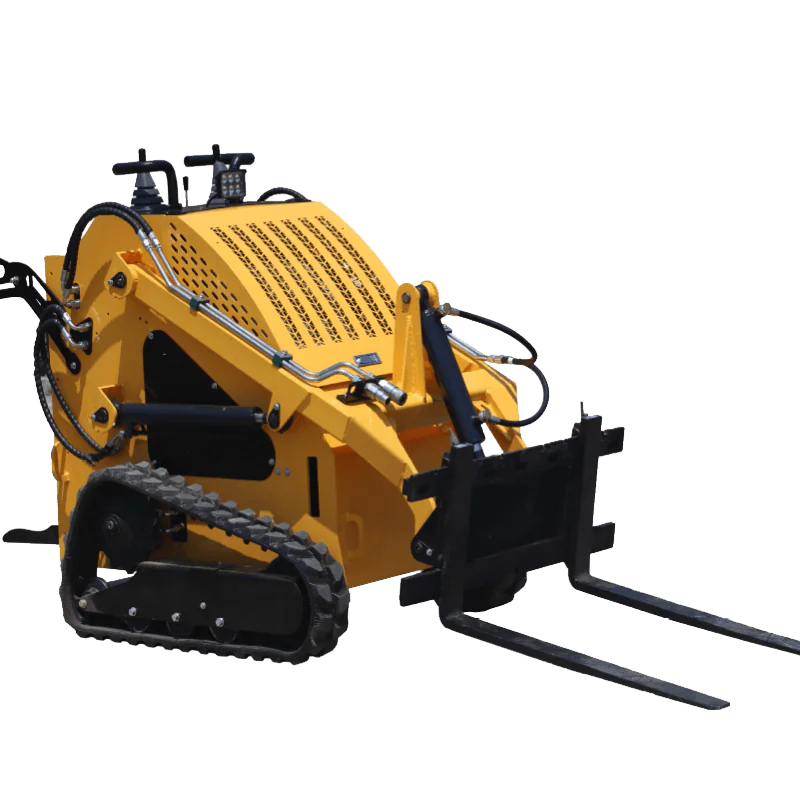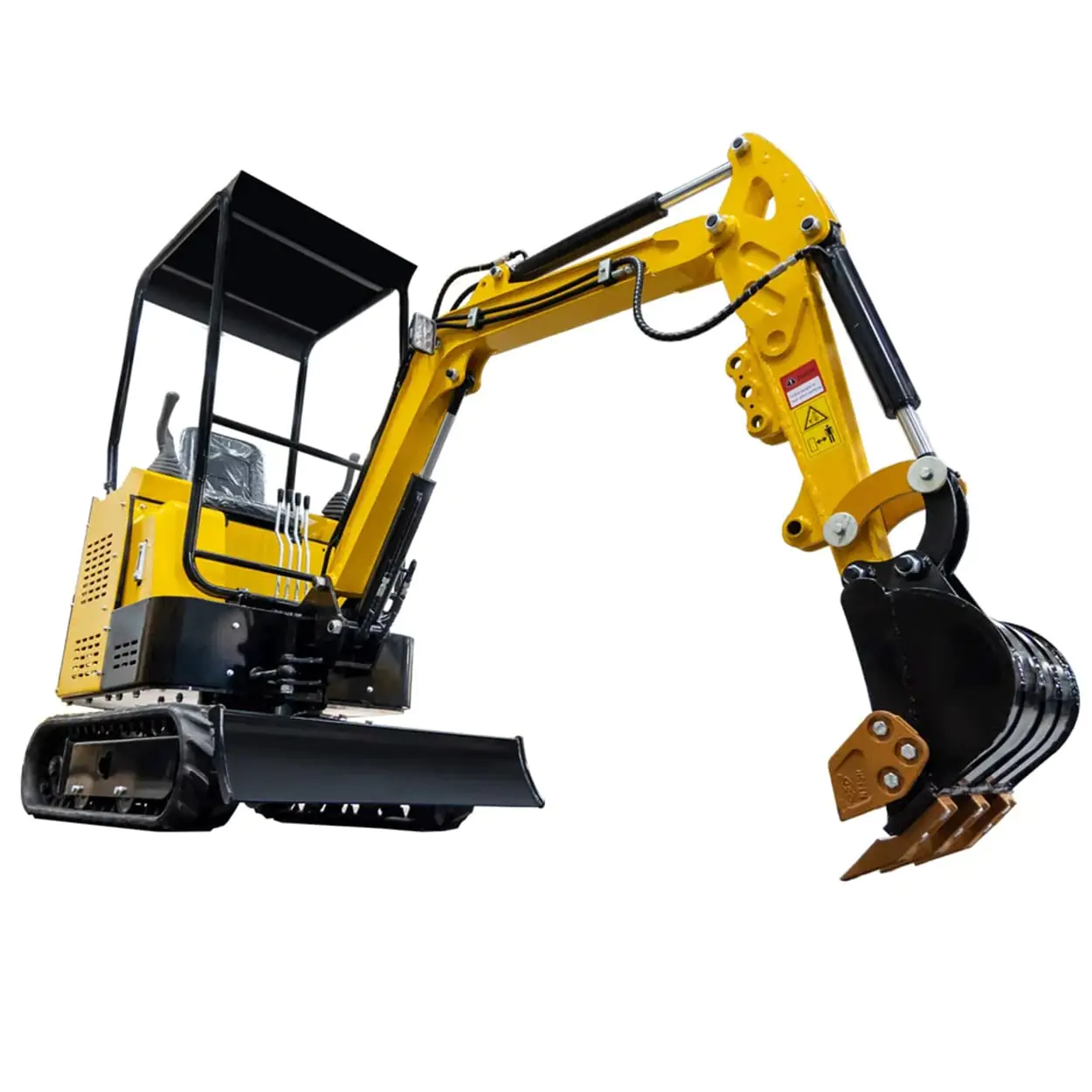Operating a mini excavator can be a game-changer for your construction or landscaping projects. These versatile pieces of equipment are lighter and smaller than standard excavators, making them easier to maneuver in tight spaces. Whether you’re a new operator or looking to brush up on your skills, this comprehensive guide provides essential tips and techniques to safely operate a mini excavator and maximize your efficiency on the job site.
What Is a Mini Excavator and Why Use One?
A mini excavator is a piece of heavy equipment used for digging, excavation, and demolition tasks in construction and landscaping projects. Smaller than a standard excavator, mini excavators offer a compact size that allows you to work in tight spaces where larger machines can’t fit. They’re ideal for projects like installing pools and hot tubs, trenching, landscaping, and utility work.
Benefits of Mini Excavators:
- Easier to Maneuver: Their smaller size makes them easier to operate in confined areas.
- Versatile Attachments: Mini excavators can use various attachments like buckets, augers, and thumbs.
- Cost-Effective: They consume less fuel and are cheaper to rent or buy than larger excavators.

Understanding the Controls and How to Operate Them
To safely operate a mini excavator, it’s crucial to become familiar with the machine’s controls.
Joystick Controls
The primary controls are two joysticks:
Left Joystick:
- Push forward/backward: Raises and lowers the boom.
- Move left/right: Swings the cab left or right.
Right Joystick:
- Push forward/backward: Moves the stick in and out.
- Move left/right: Curls and uncurls the bucket.
Pedals and Levers
- Travel Levers/Pedals: Control the movement of the tracks to move the machine forward or backward.
- Auxiliary Hydraulic Controls: Operate additional attachments like augers or thumbs.
Tip: Spend time to become familiar with the controls before starting your project.
Safety Tips for Operating a Mini Excavator
Safety should always be your top priority. Here are essential safety tips to keep in mind:
Perform Pre-Operational Checks:
- Inspect for fluid leaks, including hydraulic lines.
- Check oil pressure, lubricant, and coolant levels.
- Ensure all controls are functioning correctly.
Use Three Points of Contact:
- When getting into the cab, maintain three points of contact to prevent falls.
Wear Proper Safety Gear:
- Hard hat, safety glasses, steel-toed boots, and high-visibility clothing.
Be Aware of Your Surroundings:
- Identify any overhead obstacles or underground utilities.
- Use a spotter if necessary.
Understand the Center of Gravity:
- Be cautious when lifting heavy loads to prevent tipping.

How to Become Familiar with the Machine
Understanding your machine is crucial for efficient and safe operation.
Read the Operator’s Manual:
- Understand the controls and functions specific to your mini excavator.
Practice in an Open Area:
- Start in a clear, open area to get comfortable with the controls before approaching tight spaces.
Check for Updates:
- Stay informed about any software updates or recalls from the manufacturer.
Operating a Mini Excavator in Tight Spaces
Mini excavators are designed for tight spaces, but they require skillful operation.
Plan Your Movements:
- Know your path and be mindful of the machine’s swing radius.
Use Slow Movements:
- Operate the machine slowly to maintain control.
Mind the Tracks:
- Keep the heavy side of the machine uphill when on slopes.
Remember: Mini excavators can rotate a full 360 degrees, making them highly maneuverable.

Mini Excavator Attachments and Their Uses
Enhance your excavator’s versatility with various attachments.
Buckets:
- Standard digging, trenching, and clean-up.
Augers:
- Drilling holes for posts, trees, or footings.
Thumbs:
- Grabbing and moving debris or materials.
Hydraulic Breakers:
- Demolition of concrete or rock.
Tip: Ensure the attachment is compatible with your machine’s hydraulic capacity.
Maintenance Checks Before Operating
Regular maintenance keeps your mini excavator running smoothly.
Daily Inspections:
- Check for fluid leaks, wear and tear, and proper lubrication.
Monitor Fluid Levels:
- Regularly check lubricant and coolant levels.
Inspect Tracks and Undercarriage:
- Look for damage or excessive wear.
Test Controls:
- Ensure joystick controls and pedals are responsive.
Make a habit of these checks to extend the life of your machine and prevent downtime.

Renting a Mini Excavator: What You Need to Know
If you’re considering to rent a mini excavator for your next project, here’s what you should know:
Choose the Right Size:
- Ensure it’s the right size for your job to avoid inefficiency.
Understand Rental Terms:
- Know what’s included, like attachments and fuel policies.
Inspect Before Renting:
- Check the machine for any fluid leaks or damages.
Ask for a Demonstration:
- Have the rental company explain how to operate the controls.
Related: For reliable and affordable options, check out our 2000 lb Mini Excavator suitable for various projects.
Common Mistakes New Operators Make
Avoid these pitfalls to ensure smooth operation.
Overlooking Safety Checks
- Skipping pre-operational checks can lead to equipment failure or accidents.
Misunderstanding Controls
- Not fully understanding the joystick controls can result in inefficient work or damage.
Overloading the Bucket
- Exceeding capacity affects the machine’s center of gravity and can cause tipping.
Advice: Take time to get more comfortable with the machine before tackling complex tasks.
Tips for Operating a Mini Excavator Efficiently
Enhance your productivity with these tips.
Use Throttle Appropriately:
- Adjust the engine speed to match the task for fuel efficiency.
Plan Your Digging:
- Lower the boom and move the stick smoothly to maintain stability.
Stay in the Operator’s Seat:
- Avoid unnecessary dismounts to save time.
Communicate on the Job Site:
- Use signals or radios to coordinate with others.

Frequently Asked Questions
How do I safely move the mini excavator?
Use the travel levers or pedals to control the tracks. Always be mindful of your surroundings and move the machine slowly.
What should I do if I notice a leak?
Immediately stop operation and inspect for fluid leaks. Do not operate the machine until the issue is resolved.
Can I use the mini excavator for demolition?
Yes, with the appropriate attachment like a hydraulic breaker, you can perform light demolition tasks.
How do I become an excavator operator?
Start by familiarizing yourself with the equipment, consider formal training, and gain experience under supervision.
Conclusion
Operating a mini excavator efficiently and safely requires knowledge and practice. By understanding the controls, performing regular maintenance, and following safety protocols, you’ll maximize your productivity and keep your job site secure.
Key Takeaways
- Familiarize Yourself with Controls: Understand joystick functions and machine operations.
- Prioritize Safety: Perform pre-checks and wear appropriate gear.
- Use Appropriate Attachments: Enhance versatility with the right tools.
- Maintain the Equipment: Regular checks prevent downtime and extend machine life.
- Plan Your Work: Efficient operation saves time and reduces errors.
For more information on mini excavators and to find the perfect machine for your project, visit our selection of Chinese 1 Ton Mini Excavators and Remote Control Lawn Mowers for versatile landscaping solutions.
“The mini excavator is a powerful piece of equipment that, when used correctly, can make any project more efficient and manageable.”









